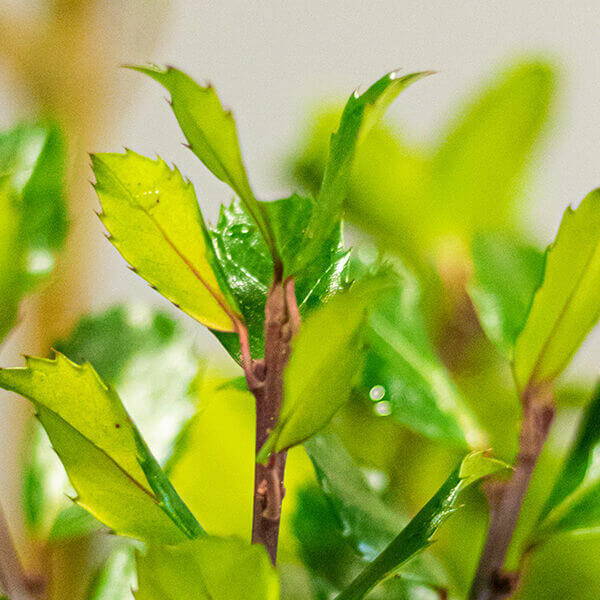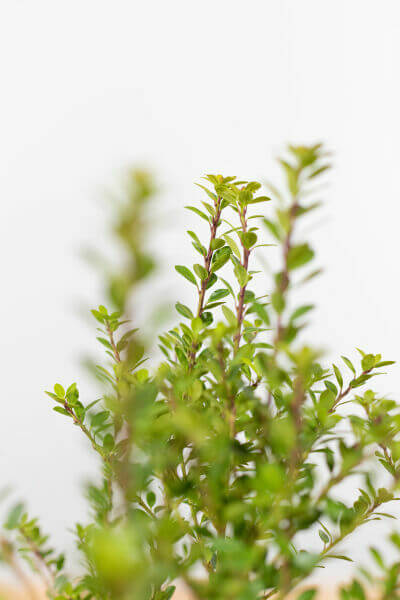Native Hedge Plants For Wildlife Gardens
Enhance your garden's allure with lavish hedge varieties such as Yew (Taxus), Thuja, Laurel, Photinia, and Bamboo, commemorated for their structural integrity and ecological benefits.
Yew and Thuja offer evergreen protection and winter durability, while Laurel offers rapid growth and broad, aromatic leaves.
Photinia adds seasonal beauty with its vibrant red foliage, and Bamboo provides a low-maintenance, serene ambiance.
These hedges enhance air quality, reduce noise, and produce tranquil, personal areas.
Correct planting, spacing, and upkeep make sure energetic development and eco-friendly harmony.
Check out how these lavish ranges can elevate your garden's charm and wellness.
Secret Takeaways
Change Your Garden With Lush Hedge Varieties
- Select Yew for its thick, evergreen development and unequaled longevity.
- Select Laurel for its quick development and broad leaves, ensuring quick privacy.
- Select Photinia for its lively seasonal foliage, which turns a striking dark red.
- Make use of Bamboo for a low-maintenance, winter-hardy hedge with aesthetic appeal.
- Area plants 2-3 per meter and prune regularly for optimal growth and health.
Popular Hedge Plants
When transforming a garden with lavish hedge ranges, it's necessary to think about popular hedge plants such as Yew, Thuja, Laurel, and Photinia due to their unique characteristics and benefits.
Yew (Taxus) is highly respected for its durability and dense, green growth, making it a prime option for sustaining landscapes.
Thuja is kept in mind for its evergreen foliage and robust winter resilience.
Photinia adds seasonal vibrancy with red leaves that darken with time, creating vibrant visual appeal.
Laurel offers quick growth and aromatic, broad leaves, perfect for fast personal privacy.
Furthermore, Bamboo is an exceptional choice for ambiance, providing a low-maintenance, winter-hardy alternative that enhances the garden's visual with its elegant, swaying walking sticks.
These selections accommodate a range of horticultural needs and choices.
Advantages of Garden Hedges
Garden hedges offer a wide range of advantages, making them an important addition to any landscape. These natural barriers are cost-efficient to carry out and supply substantial wind protection, boosting air circulation and contributing to noise decrease. The thick foliage of hedges like Thuja and Beech guarantees privacy by obstructing visibility, creating a remote and serene environment.
Hedges also play an essential function in microclimate guideline, offering a stable environment that cultivates plant development and minimizes temperature level changes. Their complex leaf structures filter contaminants, enhancing air quality and contributing to a much healthier garden ecosystem.
Additionally, hedges master noise reduction, soaking up and deflecting sound waves to lower ambient noise levels. This dual performance of providing both visual and acoustic personal privacy improves the overall serenity and aesthetic appeal of any garden.
Planting and Upkeep Tips
For a successful hedge, meticulous preparation of the planting location is essential. Guarantee the soil has correct pH and drain to support strong root advancement.
Area the plants appropriately for the chosen types. Water the hedge frequently during its initial growth phase, adjusting as required with seasonal modifications.
Carry out a organized insect control and disease avoidance technique, using organic or chemical treatments when essential. Frequently examine for aphids, mites, and fungal infections.
Apply mulch to retain moisture and reduce weeds. Seasonal pruning promotes thick development and air blood circulation, essential for plant health.
Following these standards will assist you cultivate a vibrant, properly maintained hedge that boosts the beauty of your garden.
Spacing and Cutting Guidelines
Spacing and Cutting Standards
Proper spacing and trimming are essential for cultivating healthy, aesthetically appealing hedges. Sufficient spacing guarantees each plant receives adequate nutrients, light, and air flow.
Follow these standards for ideal hedge upkeep:
- Spacing: Position hedge plants 2-3 plants per meter to encourage robust growth.
- Pruning Methods: Routine pruning is essential for maintaining desired hedge height and shape. Cut brand-new development in summer season and cut down older wood throughout winter.
- Seasonal Care: Change trimming techniques and schedules according to seasonal requirements to ensure plant health.
- Hedge Height: Frequently display and cut to maintain the desired hedge height and achieve consistent aesthetics.
Complying with these actions will guarantee your hedge grows, enhancing both the appeal and functionality of your garden.
Choosing the Right Hedge
Picking the Right Hedge
Choosing the suitable hedge involves assessing factors such as fully grown height, foliage density, and ecological durability. Successful hedge plant selection requires understanding each read more types' growth attributes and site-specific versatility.
For example, Yew (Taxus) uses outstanding longevity and thick growth, while Thuja is notable for its winter season resilience. Additionally, considering maintenance requirements is important; fast-growing species like Laurel or Privet need regular cutting, whereas low-maintenance choices like Bamboo or Ivy may be more suitable for those looking for very little upkeep.
Ecological elements such as soil type, light availability, and wetness conditions ought to also guide the selection procedure. This cautious technique guarantees the picked hedges will thrive, supplying both aesthetic and practical advantages to the garden landscape.
Delivery and Planting Suggestions
To ensure your hedge plants prosper, they need to be delivered by specialized carriers and planted without delay upon arrival.
Follow these important actions for successful planting:
- Soil Preparation: Improve the soil with organic matter to improve drainage and nutrient material.
- Planting Depth: Develop a trench twice the width and equal to the depth of the root ball.
- Watering Methods: Water thoroughly after planting, keeping the soil regularly damp however not saturated.
- Mulching: Use a layer of mulch to maintain moisture and suppress weeds.
Client Assistance and Service
Given the essential role of prompt support in horticultural pursuits, our customer support team is available six days a week through telephone, email, and social networks to offer expert guidance and quickly attend to any issues. Their devotion to fast response times guarantees client fulfillment by solving questions connected to plant health, optimal planting methods, and maintenance schedules.

Accessibility
-------------------
This comprehensive support system, strengthened by an excellent 9.3/ 10 consumer ranking, highlights our commitment to enhancing the gardening experience for every client.
Often Asked Questions
For How Long Does It Consider Hedge Plants to Develop?
Hedge plants generally require one to three years to end up being completely developed, with the specific period differing by types and growing conditions.
Effective care throughout this critical period is essential for robust growth. Consistent watering, vigilant weed control, and appropriate fertilizer application are essential in promoting strong root advancement.
For instance, fast-growing types like Laurel might develop more rapidly, while slower-growing varieties such as Yew might take longer. Diligent upkeep speeds up the facility procedure, leading to thick and healthy hedges.
What Are the very best Hedge Plants for Privacy?
The question of the very best hedge plants for personal privacy includes assessing evergreen and deciduous choices.
Evergreen hedges like Thuja, Laurel, and Cypress supply year-round protection, guaranteeing continuous personal privacy.
On the other hand, deciduous hedges such as Beech offer seasonal privacy, shedding leaves in cooler months.
Key maintenance tips for personal privacy hedges include regular cutting, fertilizing in spring, and appropriate spacing-- typically 2 to 3 plants per meter.
In addition, consistent watering and diligent weed elimination are essential for promoting healthy, thick development.
Can Hedge Plants Attract Wildlife to My Garden?
Yes, hedge plants can bring in wildlife to your garden by offering essential advantages like shelter, food, and nesting sites, therefore improving regional biodiversity. Yew, holly, and laurel are excellent for bring in birds, while ivy supports a variety of pests.
However, it is necessary to note that there are some disadvantages, such as increased maintenance to manage bugs and regular upkeep. Carefully selecting and keeping hedge varieties can assist balance these drawbacks and advantages, ultimately cultivating a vibrant and sustainable environment in your garden.
Are There Any Blooming Hedge Plants Available?
Yes, there are flowering hedge plants available that can improve the beauty of your garden.
For example, Elaeagnus, likewise known as Olive Willow, produces aromatic white flowers in the fall, including a touch of elegance.
Photinia, another popular option, showcases lively red leaves that mature into a rich green, developing a dynamic visual impact throughout the seasons.
To make sure these plants thrive, it's vital to practice correct pruning strategies and seasonal maintenance, such as trimming new growth in the summertime and cutting down in the winter season.
These measures will help maintain the health and aesthetic appeal of your flowering hedges.
How Do I Avoid Insects in My Hedge Plants?
To avoid bugs in hedge plants, use natural bug control approaches and keep appropriate hedge care. Present helpful pests like ladybugs, which prey on harmful pests, to develop a well balanced environment.
Regularly check your hedges for signs of infestation and promptly get rid of any affected parts to avoid the spread. Ensure the health of your hedges by using well balanced fertilizers and providing adequate water.
Utilize mulching to maintain soil wetness and correct spacing to lower plant tension and promote robust development. These practices collectively assist in reducing pest issues and keeping a healthy hedge.
Conclusion
In essence, picking the ideal hedge ranges such as Yew, Thuja, and Laurel can change any garden into a relaxing haven. These plants provide year-round plant, improve aesthetic appeal, and offer useful advantages like noise reduction and wind defense.
Appropriate planting techniques, precise spacing, constant watering, and seasonal cutting are crucial for optimum growth.
Trustworthy delivery services and skilled client support make sure a seamless experience from purchase to planting, making it easier than ever to elevate your outdoor area.
Garden hedges offer a multitude of advantages, making them a valuable addition to any landscape. These natural barriers are cost-efficient to execute and provide considerable wind protection, improving air circulation and contributing to sound reduction. The thick foliage of hedges like Thuja and Beech ensures personal privacy by obstructing exposure, developing a secluded and tranquil environment.

Pruning Methods: Regular pruning is essential for keeping preferred hedge height and shape. Trim new development in summertime and cut back older wood during winter season.